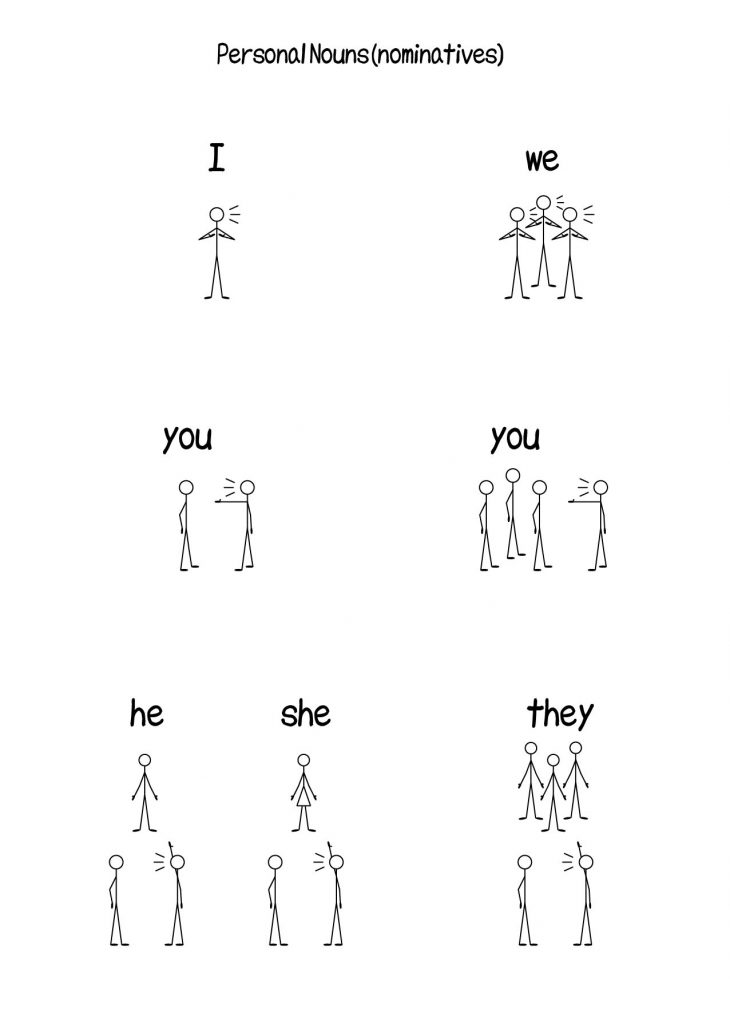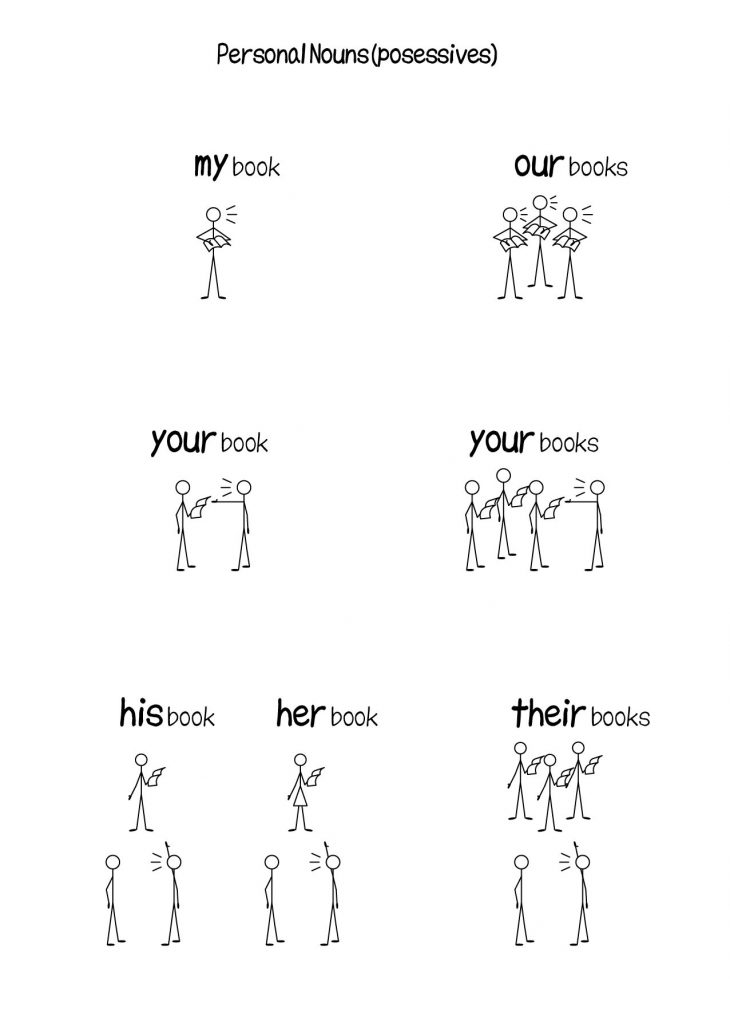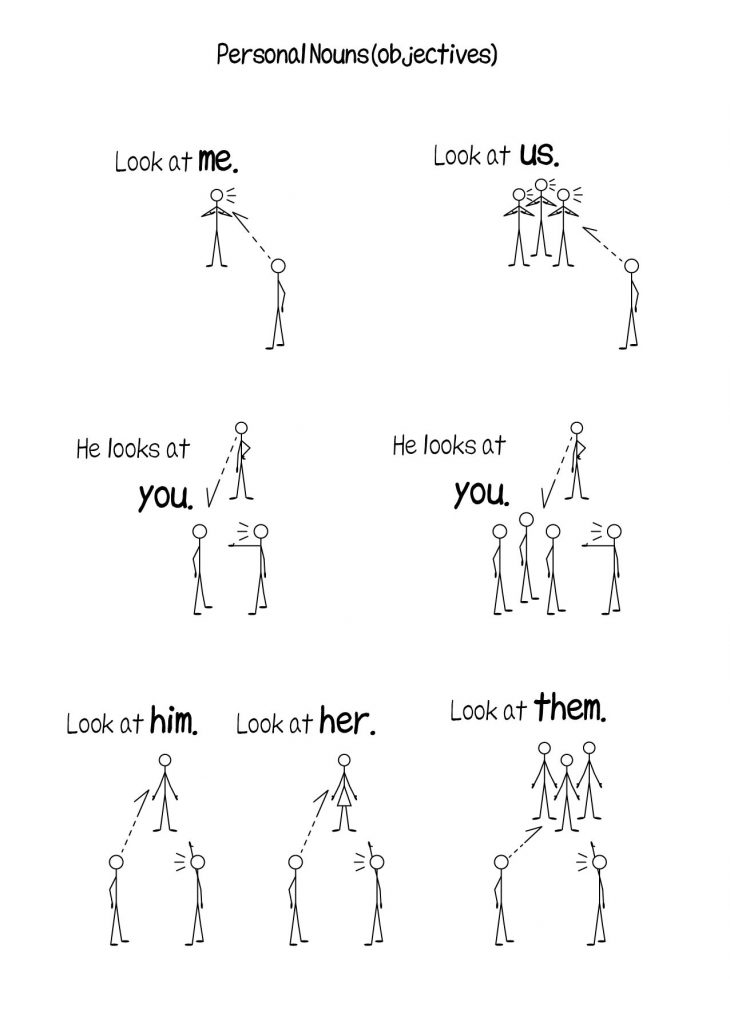題名は忘れてしまったけど、中学生のときに手にした英語の入門書にはめっちゃシンプルなstickmanのイラストが描いてあった。絵と同じくシンプルな英語の単語や文が添えてあるだけで文法の説明など一切ない。米国の出版社の本だからハナから日本語も書いてない。目で見たことを訳さずにそのまま英語として理解し、身につけるのだ。これは良い。
これで勉強したところで学校の成績には結びつかないけど、本当に良い本だったので勉強嫌いの僕が分厚いペーパーバックを何度も何度も読み返したものだ。
今、英語を教える立場になってその本を教科書に使ってみたくなり、あらためてその本を探したのだけど、洋書の多い丸善など大きい本屋へ行ってもネットを漁ってみても見つからない。(誰か知りませんか? っても、50年も前の本が今も継続されているとは思えないしなあ、、、たしかロシア語やドイツ語、フランス語などのバージョンもあったっけ)
じゃあ、無いもんは自分で作る。とりあえず人称代名詞の格変化を、記憶をたよりに描いたイラストのstickmanで表現してみた。(未完成なので、まだまだ改訂予定)
わかるかなあ、、、




Hmmm, missing “y’all” and third person singular neutral “they”
Rebecca, thanks for your comment.
You should’ve waited a little more. Third person singular neutral “it” and its plural “they” are on the separate sheets, which are yet to be uploaded. I need to spend more time to explain the usage of “it”, because “it” is tough stuff for Japanese speakers.
Japanese people often mistake a personal pronoun “it” for a demonstrative pronoun, because in our language there are three demonstrative pronouns: “これ”, “それ”, and “あれ”, instead of two, “this” and “that” (except for their plurals) in English. (Plural is another problem since we Japanese have very vague idea about singularity and plurality of noun, which makes things complicated when learning English)
“It” in English is used to indicate something whose gender is not clear or something that has no gender, but “it” also refers to an idea or topic that is held in common between the writer and reader. Moreover, “it” can be a formal subject or formal object, e.g “it’s fine today, isn’t it?”, “take it easy”.
All these things cannot be expounded with simplified illustrations, so that these are auxiliary references. I am drawing these figures just to have my students grab an rough idea about pronouns of English without using Japanese words.
I know I am not up to par in teaching English and it may be a laugh for a native English speaker like you.
Actually, “they” is the preferred pronoun for third person singular neutral. People aren’t referred to as “it” – that would be derogatory.
However, it is common usage here to use “they” to refer to a person whose gender is not known. Also, people who don’t like gender-binary identification will even refer to themselves using they/them/their pronouns. This is becoming more common.
Thank you, Rebecca. I vaguely remember the “they” topic you brought up once long time ago. I’ve gotta study it and learn more about the gender-binary identification issue.
Anyway, you gave me another headache, but that will help me with understanding how English is changing today. I am glad to have a friend like you.
I drew all these figures in order to teach English with them. I had been searching for an English book with similar illustrations but in vain for long time. Just now, two of my friends found the book I was looking for. The book was first published in 1945 and is till in print and on the market. Finding out the textbook available, I no longer have to draw figures.
Rebecca, you made me be aware of my lack of knowledge in the usage of singular they in English. Years ago, probably told by you, I encountered this, and then forgot.
When you pointed out “they” is missing from the personal pronoun list, I thought you were joking or something. As you explain what singular they is, I gradually remembered what singular they is.
I may have learned singular they along with other pronouns in school. I got straight As in introductory English 100 at undergrad school, but apparently it didn’t help. Of course, I am not about to excuse my mistake.
Every time I make a mistake (like the one that you pointed out), I come to realize I must study more than my students do. Teaching English makes me learn helluva lessons.
I really appreciate your kind advice, Rebecca. Thank you.